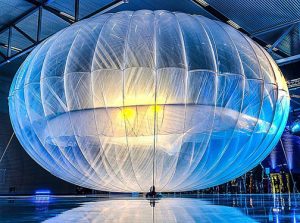TRB: FCC’s OK to Project Loon is ‘leap forward’ for PR


Project Loon is a research and development project being developed by Google to provide Internet access to rural and remote areas.
The Federal Communications Commission’s approval of Google’s Project Look technology — which will enable fast recovery of telecommunications services in Puerto Rico — is a “leap forward” in the use of new technology to put the island back online, said Telecommunications Regulatory Board President Sandra Torres.
The project consists of launching a fleet of balloons to provide high-speed internet coverage to users on the ground. Google’s balloons float 65,000 feet high and work by retransmitting a signal from a local telecom provider, sending that signal back to subscribers.
The connection speed is estimated at up to 10 Mbps direct to mobile phones. Balloons use solar panels during the day and batteries at night. These small polyethylene balloons are designed and manufactured to withstand atmospheric conditions in the stratosphere that last for a period of more than 100 days. Each globe covers an area of 5,000 square kilometers.
The FCC approved its use on Friday to help get Puerto Rico back online.
FCC Chairman Ajit Pai “has been a great collaborator in the whole process of recovery after the passage of Hurricane María. Pai again demonstrates the high priority the FCC has given to the island’s telecom recovery with the approval of Google’s Loon project, so we will soon see Google’s balloons over Puerto Rico,” Torres said, adding the TRB has made available its legal and technical expertise to obtain the temporary authorization granted by the FCC, which allows Google to work with local providers to enable communications.
After the balloons are launched, they will 20 kilometers into the stratosphere enabling the connection in collaboration with telecom providers to offer connectivity in areas without service.
“The multi-stakeholder group’s efforts are moving forward, now with greater support from the federal regulatory agency, which last week also approved a $77 million advance from the Universal Service infrastructure development fund for recovery,” said Torres.












Great idea if they use solar energy to remain in the right place without being tethered by cable to have planes needing to avoid!